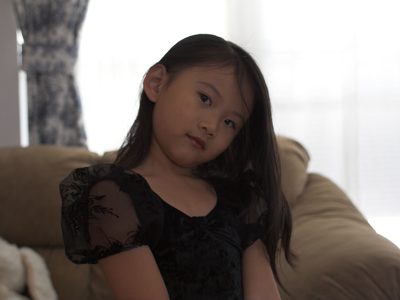Why does that new widescreen HDTV look so weird?

When I criticized YouTube over the weekend that they were displaying widescreen videos incorrectly and went on with my pet peeve about TV aspect ratios in general confusing consumers, I got a few responses. Though I probably shouldn't be surprised, a few of them (here and here) actually blasted me because they can't stand buying a brand new widescreen TV and see black bars on the sides and waste screen Real Estate. User smorty actually said "I let 4:3 stretch to 16:9" and he's probably very typical. So I decided to visually explain why this is such a bad idea and maybe then people will understand why their brand new widescreen TV looks so weird.

A - 4x3 correctly displayed as 4x3 "full screen" image
Example A shown above is a 4x3 image being displayed correctly on a 4x3 screen. This is the standard 4x3 image format known as "full screen" aspect ratio because it is the typical format used by all the TVs up until recent years. But what happens if you want to display that same image on a newer widescreen TV that is 16x9 in dimensions?
B - 4x3 correctly displayed as 4x3 on a widescreen TV
In example B shown above, we properly maintain the correct aspect ratio by padding the sides with empty black space. The problem with this is that most people would get frustrated with the fact that they just bought big widescreen HDTV and they don't get to use the full screen. The truth of the matter is, displaying a standard definition 4x3 ratio image on a newer widescreen TV probably looks better when the image is smaller because the artifacts aren't as noticeable. But many people would rather fill the entire screen and get quantity over quality.
C - 4x3 wrongly displayed in 16x9 "widescreen" format
Option C above is unfortunately one of the more popular choices that people make because it fills the entire screen. To fill a widescreen with a 4x3 image, we have to stretch the image and completely disregard the aspect ratio. But a lot of people just say "so what, I just want to fill the screen". The problem with this is that you get a distorted image that looks like you're in a circus funny mirror that makes you look like you're 33% fatter.
When a person's head in the image is level, that person will just look fatter and it's less obvious that something is wrong with the image. But once the head is slightly tilted in our examples, it becomes rapidly apparent that something is really wrong because the head is skewed. Either way, image stretching is the ugliest option available and it drives me up the wall when I see public places showing stretched fat TV like this. It's almost bad enough to give me a headache looking at a distorted image.
D - 4x3 cropped on top and bottom to fit widescreen TV
Option D shows a better option to fill that widescreen TV where you chop a little more than 16% off the top and another 16% off the bottom and stretch the entire image out horizontally and vertically equally. The end result is that you get your full widescreen filled with an image without distortion but you do crop a little off the top and bottom. This actually works out extremely well if the source is letterboxed in the first place since all you're doing is chopping empty black space. Had you gone with the stretch option in example C, the black bars would have remained top and bottom and you still would have had a distorted image. Even though you might cut a little off the top of the head and lose the bottom of the body, this is definitely more desirable than option C. For the life of me I won't ever understand why people choose option C and why manufacturers offer this mode in the first place.
Of course it is possible to have just the opposite problem when the screen or playback software only knows how to deal with 4x3 "full screen" images and attempts to play back anamorphic widescreen movies in full screen mode. This can happen when you use a typical laptop screen with "normal" 4x3 "full screen" aspect ratios or it can happen when software or a web page like YouTube insists on playing back 16x9 movies in a 4x3 box.
E - 16x9 anamorphic displayed correctly in widescreen format
Example E above shows what happens when a widescreen 16x9 anamorphic movie is played back correctly in a 16x9 format. Unfortunately, video sites like YouTube or Google video will only play back video in 4x3 format and you get the funny mirror effect shown in example F below where everything is stretched vertically.
F - 16x9 anamorphic displayed wrongly in 4x3 format
Example F is how YouTube or Google video expects you to play back your anamorphic widescreen videos. The same thing happens when you have an older big screen 4x3 format TV that attempts to play back anamorphic widescreen content stretched out to full screen.
G - 16x9 anamorphic displayed correctly in 4x3 format
Example G shows how a widescreen movie should display on a 4x3 display. For some reason people are more willing to tolerate black bars on the top and bottom and I would have to assume they've grown accustom to this because a lot of movies are deliberately letterboxed. Note that while letterboxing may look like the anamorphic example G above, it isn't the same thing. Letterboxed video is actually encoded in normal 4x3 aspect ratio with black bars encoded in to the video and the quality isn't as good. Anamorphic video either squeezes the video vertically shown in example G which actually increases resolution density and light, or it stretches the image horizontally to properly fit a widescreen display as shown in example E.